Learn how to make nutritious breakfast porridge and oatmeal with this basic recipe! I use old fashioned rolled oats, which have great health benefits, to make an easy breakfast that you can top with fresh and nuts.
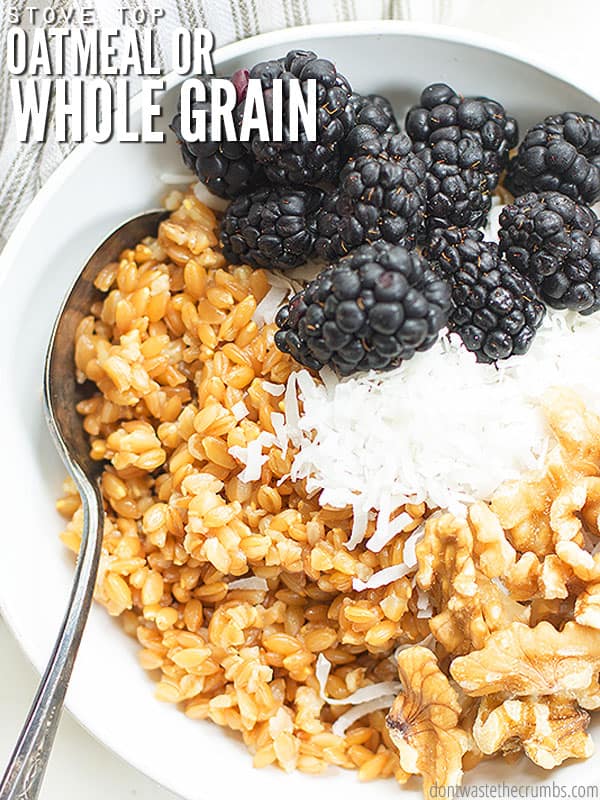
When we first started the switch from processed food to real food, I had to learn how to NOT rely on those small packets of flavored instant oatmeal.
Not only are they full of sugar, but they’re expensive!
That led me to make homemade instant oatmeal packets in lots of flavors, but what if I ever ran out of those? Couldn’t I just make breakfast oatmeal on the stove?
The answer is yes! A basic breakfast oatmeal recipe should be in everyone’s kitchen skills, and my recipe couldn’t be any easier!
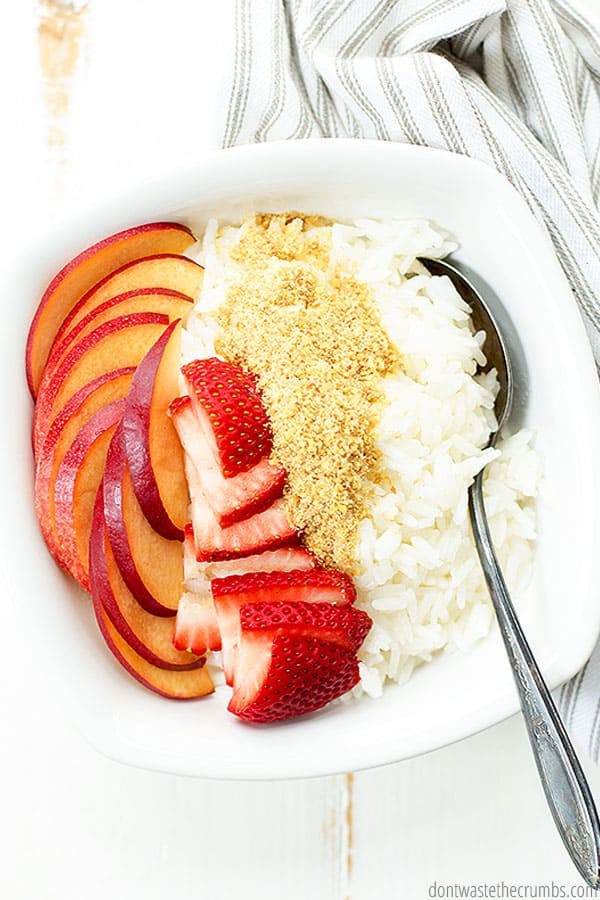
Breakfast Oatmeal
First, let me just start off by saying that just because most families have breakfast oatmeal, doesn’t mean you can ONLY have oatmeal at breakfast. You can certainly have oatmeal at lunch or dinner or even for a snack if you wanted to!
We’re particular of this breakfast oatmeal recipe for a few reasons:
- It uses rolled oats. These have more chew than instant oats, but less crunch than steel-cut oats and they’re my kids’ favorite.
- Rolled oats are CHEAP and easy to find. Yay for not hunting down a special ingredient for breakfast!
- Oatmeal has great health benefits.
- The ratio is very simple. We use a 1:2 (scant) ratio, so no major math going on first thing in the morning.
- It’s easy to make double, triple, or quadruple batches. Just keep the ratio!
Also, breakfast oatmeal is sometimes called breakfast porridge, which you can then substitute the grain and quinoa porridge or rice porridge breakfast or even a cold porridge breakfast if it’s too hot outside to eat something warm.
I’m including both my breakfast oatmeal recipe and a simple method to make porridge if you happen to not have oats or prefer a different whole grain.
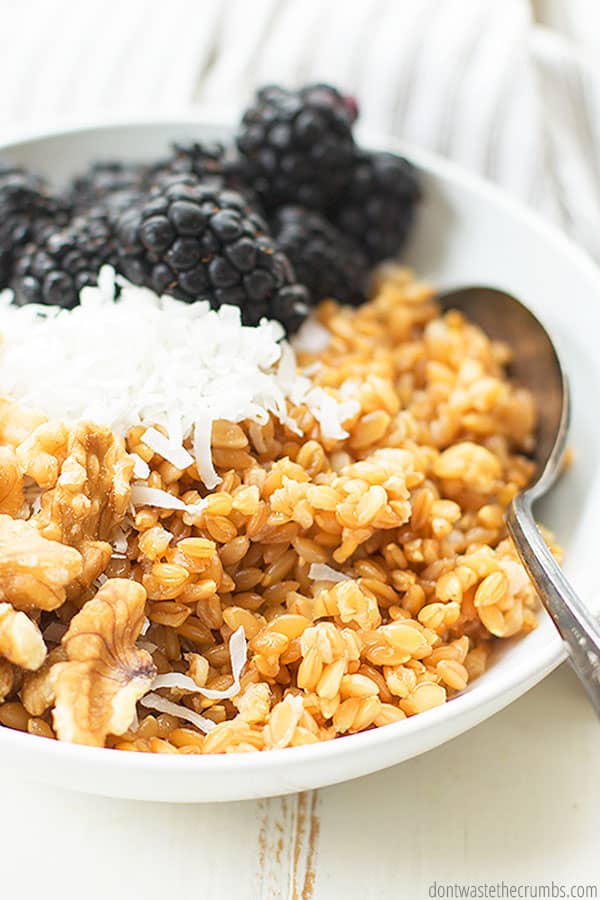
Simple Ingredients for Healthy Oatmeal Breakfast
You only need two ingredients for a healthy oatmeal breakfast:
- Old fashioned rolled oats
- Water
Can you make oatmeal with just hot water?
Yes! Some people like to use milk for a more creamy taste, but you can certainly use just water – we do that all the time!
What is the ratio of water to oatmeal?
The actual recipe is below, but you can use a 1:2 (scant) ratio for oatmeal to water.
That means for every one cup of oats, you’ll use a scant 2 cups of water.
“Scant” isn’t a technical term, but it’s not an exact science here. I usually pour a full cup of water into the oats, then refill the measure glass to the 1 cup mark and then pour some out.
Once you make this a couple of times, you’ll find your perfect ratio. Use less water for thick oatmeal, more water for thin oatmeal!
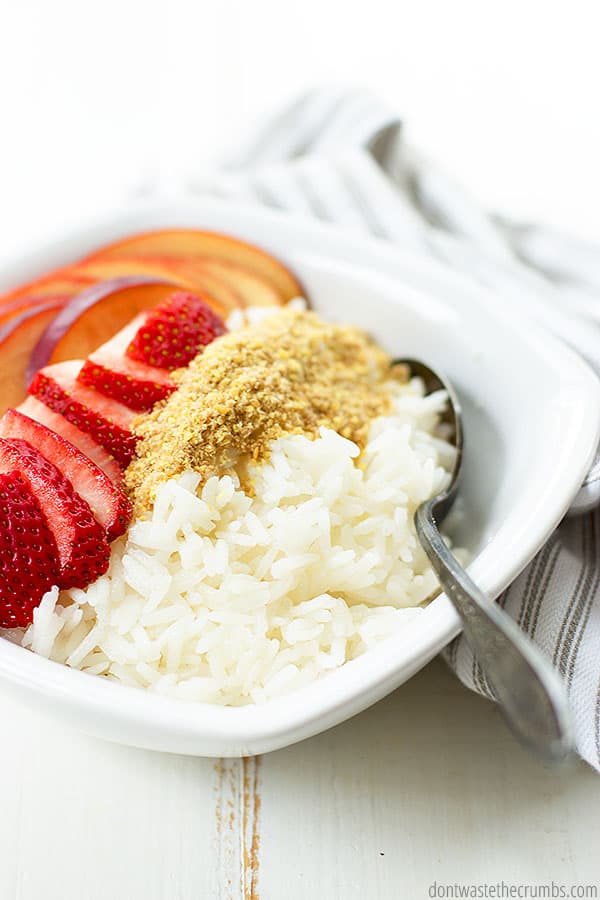
How to Make Oatmeal from Scratch
The method for making oatmeal from scratch is really easy:
- Measure the oats and water into a small pot.
- Cook over medium heat, stirring often.
- When the oats are done cooking, serve warm!
How to Make Breakfast Porridge
The method for breakfast porridge – where you’re using a whole grain other than rolled oats – is a little different.
- Combine oats, warm water, and whey/yogurt/kefir/buttermilk in a container and cover. Leave in a warm place overnight.
- Bring additional water and salt to a boil in a medium pot. Add soaked oats and cover, then reduce heat and simmer until most of the liquid has been absorbed.
What goes well with oatmeal for breakfast?
- Serve with fresh fruit, like bananas, strawberries, cranberries, or blueberries.
- Add nuts and seeds, like almonds, walnuts, or chia seeds.
- Enjoy with a healthy green smoothie!
Other Healthy Oatmeal Breakfast Recipes:
- High Protein Oatmeal
- Baked Blueberry Oatmeal
- Healthy Oatmeal Jam Bars
- Apple Oatmeal Breakfast Bars
- Instant Pot Oatmeal
- Oatmeal Peach Breakfast Crumble
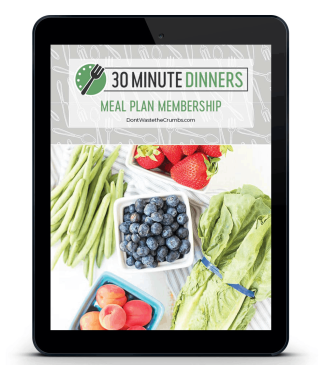
30 Minute Dinners Sample Menu
Sign up to get instant access to my 30 Minute Dinners Sample Meal Plan, complete with recipes and step-by-step instructions!Breakfast Porridge
- Prep Time: 24 hrs
- Cook Time: 15 min
- Total Time: 0 hours
- Yield: 4 1x
- Category: Breakfast
- Method: Stove top
- Cuisine: American
Ingredients
- 1 cups oats, rolled or cracked (any variety except instant will suffice)
- 1 cup warm filtered water
- 2 Tbsp whey, yogurt, kefir or buttermilk** (whey is the liquid that forms at the top of yogurt or as a by-product of strained kefir)
- 1/2 tsp salt
- 1 cup filtered water
Instructions
- Combine oats, warm water and whey/yogurt/kefir/buttermilk in a container and cover. Leave in a warm place overnight (at least seven hours) or for up to 24 hours.
- In a medium sauce pan, bring 1 cup of additional water and salt to a boil. Add soaked oats, cover, reduce heat and simmer for 5-10 minutes, or until most of the liquid has been absorbed. Oats will thicken upon cooling.
Notes
** Many individuals who are lactose intolerant are able to successfully digest homemade yogurt that has been cultured for 24 hours. Those with severe allergies to dairy products can substitute lemon juice or apple cider vinegar.
(adapted from Nourishing Traditions)
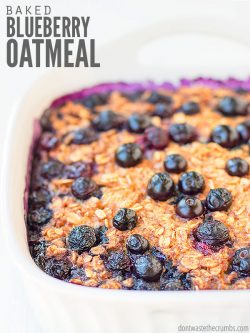
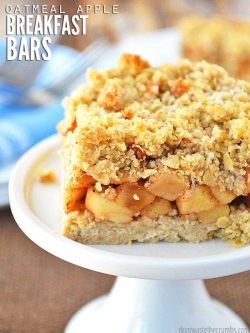
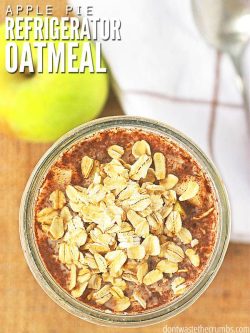
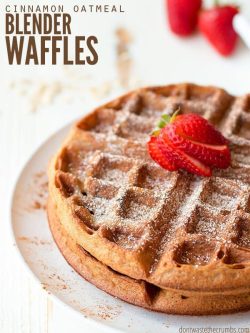
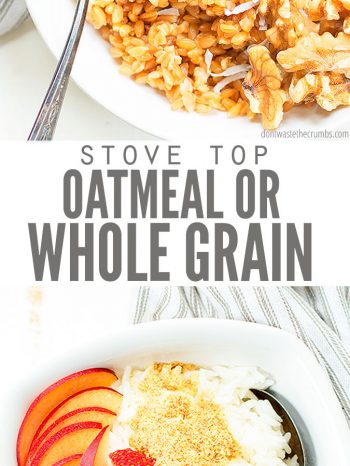
Can I soak my oats in 1 cup of kefir or yogurt for the same time period, without the water? Would it still bring about the same affect of breaking down the phytic acid as the original recipe suggests?
Thank you.
Yes it will!
I was curious, is there a functional need for all of the salt? Most oatmeal recipes call for a pinch and my family and I are generally satisfied with that amount. We tried the recipe as is (1/2 tsp of salt) and had to make a second pot of oatmeal to dilute the saltiness to a level we were comfortable with.
Chuck, this recipe is from Sally Fallon and she typically uses salt in her soaking methods and for flavor. In the end, it should be 1/8 tsp salt per serving, but you are welcome to reduce it to taste!
I just started following your blog and have really enjoyed it so far. For the past 2 or 3 years, I have been soaking my oatmeal, but I have a particularly “wicked” (I use the term loosely) version. First, after soaking, I put about 1/4 cup of maple syrup with the oats (3 cups), then I begin adding the good stuff: cocoa powder (1T per serving), sucanat (1T per serving), lots of raisins, 1 cup of soaked walnuts (soak overnight in water with about 4 tsp of Himalayan-type sea salt added), enough milk to cover (or until you like the color). My goal with these yummies is for it to taste similarly to Chunky candy bars/squares. Mission accomplished! From time to time, I also add huge spoonfuls of virgin coconut oil and sub the walnuts for almonds – Almond Joy!
My children and I enjoy our soaked oatmeal in other varieties that do not include chocolate, but this is by far the one most craved (we actually call it Loaded Oatmeal! I will have occasions where I will use Stevia instead of sucanat, but I always use the maple syrup since it knocks out the sour taste.
Thanks so much for your blog!
Your wicked oatmeal just might make it to my list of to-make desserts Elizabeth. It sounds AMAZING! Thank you for your kind words, and for taking the time to share your recipe! Now, off to makes some oatmeal. 😉
Hi Tiffany, I love the new look of your site. I came to this page to remind myself what you wrote about soaked oats. I am gradually switching to pancakes made with whole wheat flour. I also have one that calls for flour and oats. I have made it but my son was very aware of the texture of the oats (even though I pulsed them in the processor slightly). I thought maybe soaked oats would make for a smoother pancake mix. Do you think soaked oats would work well in a homemade pancake recipe? He will not eat oatmeal yet so I am trying to put oats in other things. I thank you in advance for your input.
You could blend the oats even more and make oat flour.
So I just read your linked “oats” post which was very informative – thank you! I have a question for you…. I have cooked steel cut oats in the crockpot before where they sit on low overnight with water, salt & butter. Would that be the same as your 12-24 hrs of soaking on the counter? Also I’m guessing from the linked oats post that steel cut oats would work just fine with this nourishing porridge recipe, is that right? And lastly…. I was under the impression that steel cut oats were vastly higher nutrition than just regular old fashioned oatmeal, is that not the case as far as you know?
Thank you so much for sharing all your knowledge and advice here! Trying to switch my family to more real food slowly but some things are harder to change than others! Hope to sneak in some of your recipes right under their noses! Lol
we eat ours with dulse (kids loooove dulse, mine eat it by the spoonful!) and a hardboiled egg broken up into the dish first. top with raw milk. no sweetness. my kids dont even like it with fruit as theyve had it this way since they started eating.
dont add salt when cooking it if ur adding dulse as thats salty–we use 1 1/2 tbsp per bowl (1c oatmeal each bowl).
add a tbsp of freshly ground whole wheat flour to the soak and it will reduce phytates even more.
we soak ours with 2c water tho (and still 2T acid as my kids rly dont like the acid taste, no matter what acid i use) becuz 1c water doesnt give the oats/rolled grain enough water to soak up. how do u get urs to work with just a cup of water?
I haven’t heard of dulse Helene, but that’s wonderful that your kids enjoy oatmeal without added sweet. I’m not sure if there’s a secret to getting the oats to work with one cup of water… but I do have to add more water to cook.
I like my oatmeal cold. I buy Bob’s Red Mill usually and soak it overnight in almond or coconut milk with dates and walnuts. Do you think that is sufficient soaking? I could add a little water kefir if that would be better. What do you think?
Hi Pat,
Are you including an acid medium? Like yogurt or buttermilk or kefir? That’s what causes the break down of phytic acid. Add a splash of water kefir and you’d be set!
Hi, I just started to read your postings, and love the info! By a warm place in the above recipe, Just on a container on the kitchen shelf, or in a thermos?
thanks!
Welcome Cathy! My “warm place” in on the kitchen counter, near the stove. Our climate (and thus the house) is 68 degrees year round, so that’s as warm as it’ll get for me. Since I’m either cooking or baking something each day, there’s enough heat generated to warm the general vicinity. I think a kitchen shelf would suffice! ~Tiffany
Thanks! I look forward to more posts!